
Pallopteridae is a family of flies. The various species are collectively called flutter-wing flies, trembling-wing, or waving-wing flies, because of the striking vibration of the wings in many species. Over 70 species in about 15 genera are found in the temperate regions of the Northern and Southern Hemispheres.

Prima Games is a publishing company of video game strategy guides in the United States. Formerly, Prima was an imprint of Dorling Kindersley, a division of Penguin Random House, and produced print strategy guides, featuring in-depth walkthroughs for completing games and other information, such as character sheets and move charts. Prima was acquired by Asteri Holdings in March 2019, which will transition the business to provide strategy guides in online form only, alongside other gaming news.
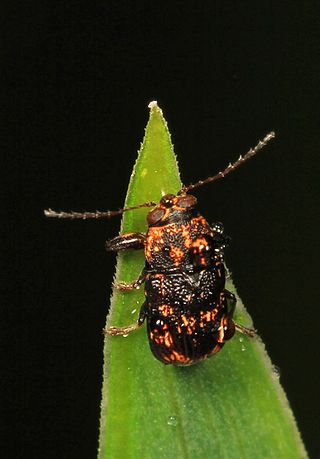
Pachybrachis is a genus of scriptured leaf beetles in the family Chrysomelidae. There are at least 220 described species in Pachybrachis.
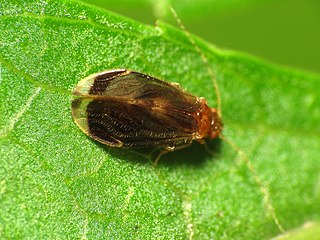
Amphipsocidae is a family of hairy-winged barklice in the order Psocodea. Most species are 3.0-4.5 mm long and have many setae (hairs) on the veins and margin of the forewing. The main veins of the forewing are usually lined with two rows of setae. Like the other members of the infra-order Caeciliusetae, they have a broad, flat labrum, with well defined edges.

The Encyclopedia of Life (EOL) is a free, online encyclopedia intended to document all of the 1.9 million living species known to science. It aggregates content to form "pages" for every known species. Content is compiled from existing trusted databases which are curated by experts and it calls on the assistance of non-experts throughout the world. It includes video, sound, images, graphics, information on characteristics, as well as text. In addition, the Encyclopedia incorporates species-related content from the Biodiversity Heritage Library, which digitizes millions of pages of printed literature from the world's major natural history libraries. The BHL digital content is indexed with the names of organisms using taxonomic indexing software developed by the Global Names project. The EOL project was initially backed by a US$50 million funding commitment, led by the MacArthur Foundation and the Sloan Foundation, who provided US$20 million and US$5 million, respectively. The additional US$25 million came from five cornerstone institutions—the Field Museum, Harvard University, the Marine Biological Laboratory, the Missouri Botanical Garden, and the Smithsonian Institution. The project was initially led by Jim Edwards and the development team by David Patterson. Today, participating institutions and individual donors continue to support EOL through financial contributions.
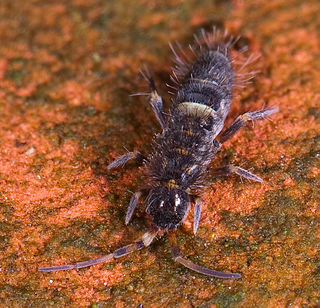
Springtails form the largest of the three lineages of modern hexapods that are no longer considered insects. Although the three orders are sometimes grouped together in a class called Entognatha because they have internal mouthparts, they do not appear to be any more closely related to one another than they are to all insects, which have external mouthparts.

Campiglossa is a genus of fruit flies in the family Tephritidae. There are at least 190 described species in Campiglossa.
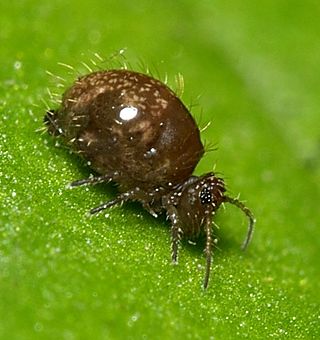
Allacma fusca is a species of springtail. This species is endemic to western areas of Continental Europe and the British Isles, where it lives in the surface layers of the soil in moist habitats such as among leaf litter.

Isotomidae is a family of elongate-bodied springtails in the order Entomobryomorpha.

Folsomia candida is a species of springtail in the family Isotomidae. It is found in soil in many locations around the world, having been spread inadvertently by humans. It reproduces by parthenogenesis and has been used as a model organism in research.

iNaturalist is an American 501(c)(3) nonprofit social network of naturalists, citizen scientists, and biologists built on the concept of mapping and sharing observations of biodiversity across the globe. iNaturalist may be accessed via its website or from its mobile applications. iNaturalist includes an automated species identification tool, and users further assist each other in identifying organisms from photographs and even sound recordings. As of 9 July 2024, iNaturalist users had contributed approximately 197,660,888 observations of plants, animals, fungi, and other organisms worldwide, and 290,007 users were active in the previous 30 days.
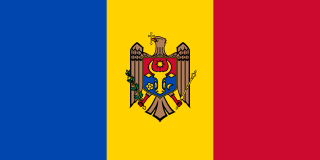
First Lady of Moldova is an informal title applied to the wife of the President of Moldova.

Prima-class cruise ships, formerly known by the project name Project Leonardo, are a class of cruise ships built for Norwegian Cruise Line (NCL). These are the first NCL ships to be built by Fincantieri. Each ship is expected to cost about $850 million. The modifications that are to be made to the design for the future Prima-class ships would result in an extra 1.2 billion euros in shipbuilding costs — about $1.27 billion.

Protalebrella is a genus of leafhoppers in the family Cicadellidae. There are about 11 described species in Protalebrella.

Proisotominae is a subfamily of elongate-bodied springtails in the family Isotomidae. There are about 7 genera and more than 190 described species in Proisotominae.

Folsomia is a genus of elongate-bodied springtails in the family Isotomidae. There are more than 110 described species in Folsomia.
Folsomia regularis is a species of elongate-bodied springtails in the family Isotomidae.
The 1904–05 season was the sixth season in the existence of Juventus. Juventus won their first league in their history.
The Just and Prosperous People's Party is a political party in Indonesia. The party formed after a merger of the People's Democratic Party (PRD) and numerous mass organizations. PRIMA's formation was announced on 27 May 2020, gained approval from the Ministry of Law and Human Rights on 29 September 2020, and officially founded on 1 June 2021.














